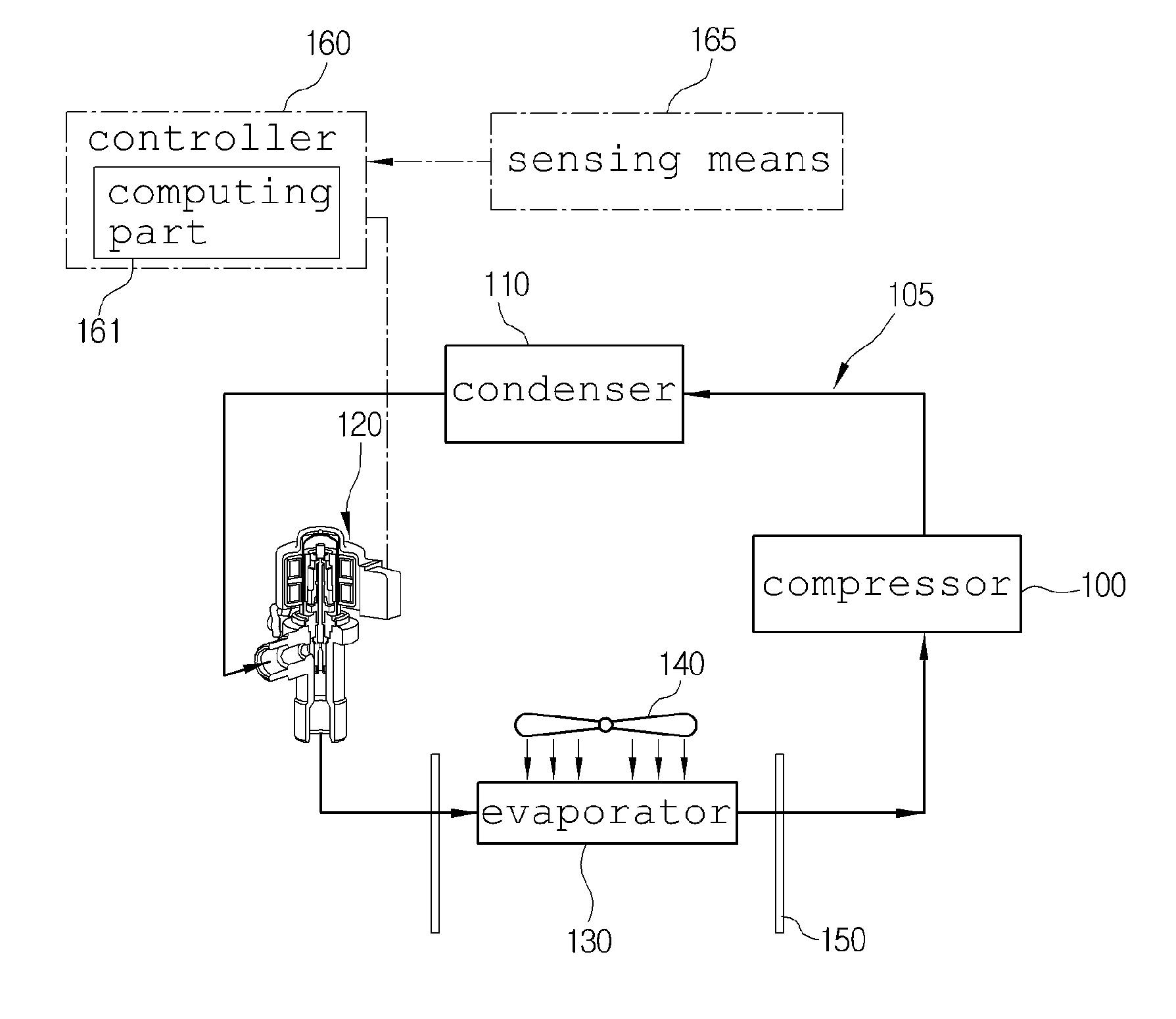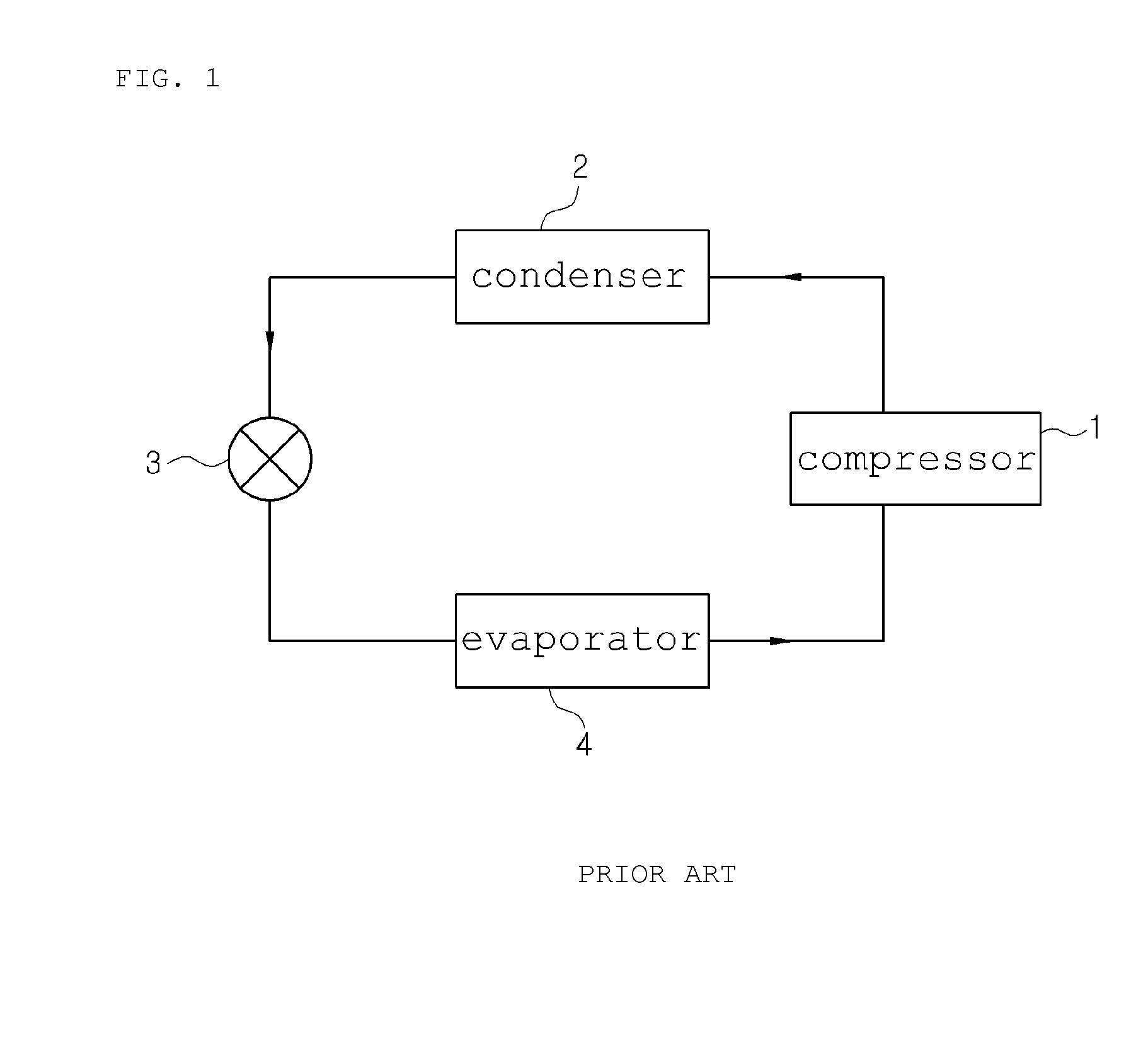Air-conditioner system for vehicle and method for controlling same
- Summary
- Abstract
- Description
- Claims
- Application Information
AI Technical Summary
Benefits of technology
Problems solved by technology
Method used
Image
Examples
Embodiment Construction
[0033]Reference will be now made in detail to the preferred embodiment of the present invention with reference to the attached drawings.
[0034]First, an air-conditioner system for a vehicle according to a first preferred embodiment of the present invention is configured of a compressor 100, a condenser 110, an electronic expansion valve 120 and an evaporator 130 which are connected to a refrigerant pipe 105 in order, and includes a controller 160 for controlling the electronic expansion valve 120.
[0035]The compressor 100 inhales and compresses gas-phase refrigerant discharged from the evaporator 130 and discharges the gas-phase refrigerant in a high-temperature and high-pressure state to the condenser 110 while receiving a driving power from a driving power supply source, such as an engine or a motor to operate.
[0036]The compressor 100 is a variable capacity compressor 100. Referring to FIG. 2, the compressor 100 will be described in brief. The compressor 100 includes: a rotary shaft...
PUM
 Login to View More
Login to View More Abstract
Description
Claims
Application Information
 Login to View More
Login to View More - R&D Engineer
- R&D Manager
- IP Professional
- Industry Leading Data Capabilities
- Powerful AI technology
- Patent DNA Extraction
Browse by: Latest US Patents, China's latest patents, Technical Efficacy Thesaurus, Application Domain, Technology Topic, Popular Technical Reports.
© 2024 PatSnap. All rights reserved.Legal|Privacy policy|Modern Slavery Act Transparency Statement|Sitemap|About US| Contact US: help@patsnap.com










